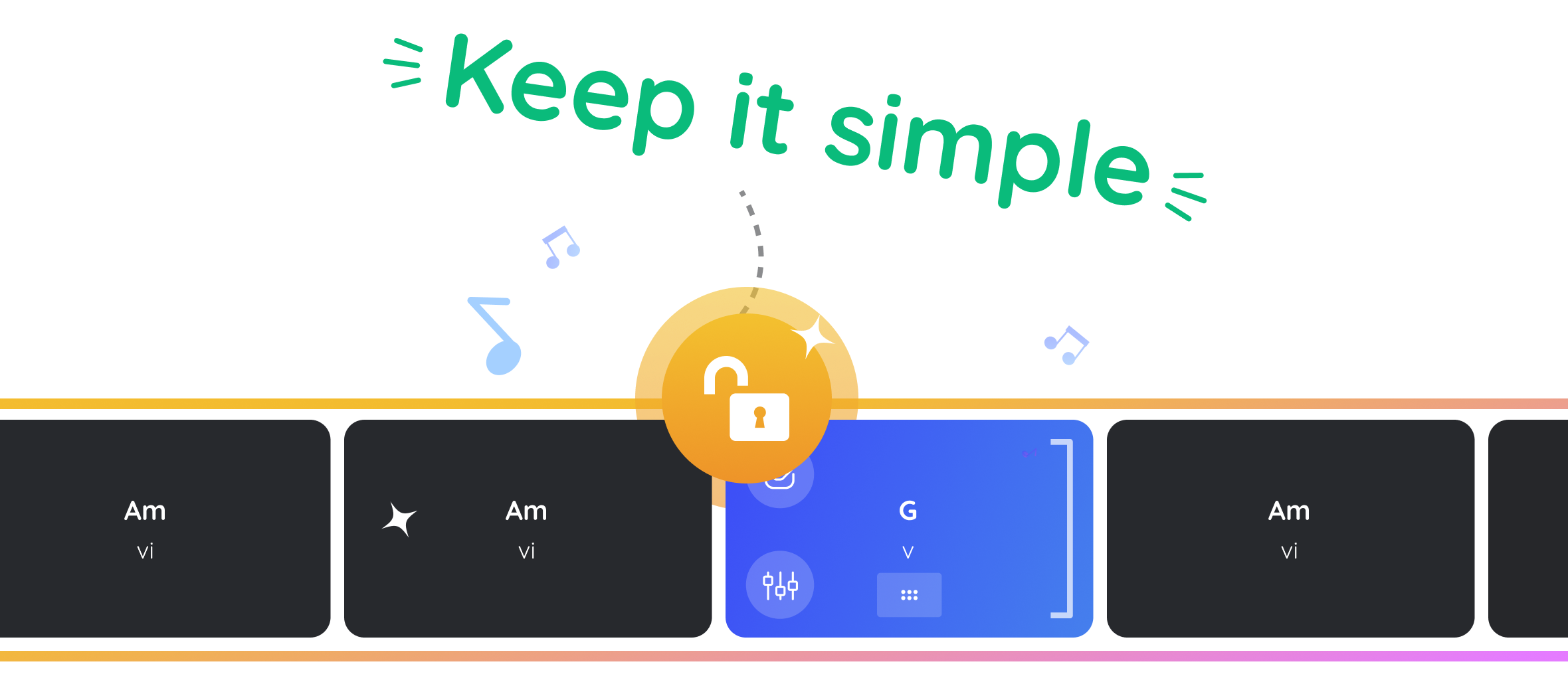
How to Write a Melody for Your Song
A great melody can make all the difference between a song that’s memorable and one that’s forgotten. But how do you go about writing a memorable and effective melody for your song?
Keep reading – in the rest of the article, we've got some great insights and tips coming your way!
This is Chapter 4 in the
How to Make a Song GuideWhat is a melody?
A melody is a succession of musical notes that are performed or sung in a piece of music. Simple melodies have a few notes in a single phrase, while more complex compositions, like jazz, create intricate melodies.
Experimenting with Chords
A great way to get started with writing a melody is to use a sequence of chords as a foundation. Experiment with different chord progressions in various scales and key until you find something that sounds good and reflects your current mood.
ChordChord Generator is a perfect tool to do that, especially if you don’t feel confident playing the instruments.

Another tip is to find a chord progression that has already been used by multiple popular artists and has gone viral. This can inspire you to come up with your own unique melody that complements the chord progression and eventually create a musical piece that stands out.
We've compiled the list of the most commonly used chord progressions for songwriters in the other article, so make sure to check it out.
Choosing Notes that Fit the Key
Crafting a memorable melody is literally impossible without choosing the right notes. To achieve this, it's important to keep in mind the key of your song, as it will help you select notes that sound cohesive and harmonious.
For example, if your chord progression is written in C# minor scale, the notes you should be using to create the melody would be C#, D#, E, F#, G#, A, and B.

Once you've selected the notes that work well within the key, you can start to experiment with different rhythms, dynamics, and articulations to add interest and variety to your melody.
Staying within the key will help you create a melody that has a coherent sound and fits seamlessly within your song.
Using Repetition
Repeating certain notes or phrases throughout the song will give it a unified feel, making it easier for listeners to remember. Similarly to the parts of the song, melodic repetition can help to create a sense of anticipation and make it more engaging.
For instance, you can use repeating phrases to build up to a climactic moment in your song or to introduce a new section.

You can also use repetition to create a sense of familiarity in your song and make it easier for listeners to sing along.
Varying the Rhythm
Varying the rhythm of your melody is a great way to keep it interesting and engaging. This can be done by introducing syncopation or changing the length of the notes.
Syncopation involves playing notes on off-beats and can add a lot of energy to your melody.

Changing the length of the notes can also help to add variety and interest to your melody. You can try using shorter or longer notes in different sections of your song to give it a different feel.
Additionally, you can experiment with different rhythms within a single phrase to make your melody sound more dynamic.
To learn more about essential rhythms that every songwriter needs to know, read along to the next chapter.
Simplicity Is the Key
Rather than adding too many notes or ornamentation, it's best to focus on creating a melody that is catchy and memorable. This can be achieved by using a simple and straightforward approach that allows the melody to shine on its own.

Remember, simplicity is often the key to a successful song. By focusing on crafting a melody that is easy to remember and sing along to, you can create a song that resonates with your audience and stays with them long after the music has ended.
How to Write Song Lyrics



